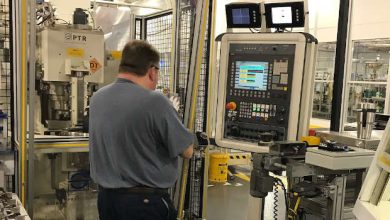How Do Antennas Work? The Key Things To Know

One thing that tv and radio have in common is the antenna. It’s fascinating that every movement of the antenna brings clarity. A slight movement makes a significant difference in the movies we watch and the music we listen to.
Even if we don’t see the antenna, some devices have them internally. So this makes us wonder, how do antennas work? Excellent question; continue reading to learn more about antennas.
How Do Antennas Work?
Microphones record the sounds of people talking and convert them to electrical energy. You take the energy and direct it along with a tall metal antenna. As electrons move back and forth along the antenna, they generate invisible electromagnetic radiation in the form of radio waves.
These waves are electrical and magnetic and go out at the speed of light, carrying with them your radio show. Radio waves pass through the metal antenna, causing electrons to move back and forth. This results in an electric current—a signal that the electrical components within the radio convert back to audible sound.
Types of Antennas
Radio antennas may be as basic as long straight rods. Several indoor television antennas are dipoles. This is a metal rod that has been cut in half and folded horizontally to resemble a person standing with their arms spread out horizontally.
More complex outdoor television antennas include many of these dipoles together with a central support rod. There are circular wire loops and, of course, parabolic satellite dishes. Either way, you want to make sure you get quality antennas, like the larsen dual band antenna.
Why Are There So Many Distinct Types?
The waves coming at an antenna from a transmitter are identical, regardless of the form or size of the antenna. A varied arrangement of dipoles will assist in concentrating the signal, making it more detectable. This effect may be amplified further by adding disconnected dipoles, referred to as directors and reflectors.
This helps redirect more of the signal to the receiving dipoles. This is similar to signal enhancement, the ability to detect a weaker signal than a simpler antenna.
Benefits of Antennas
Antenna technology plays a meaningful role in how we use other technology. The following are some of the benefits of using an antenna:
- The intensity of the signal rises
- Achieve a high degree of directivity
- Decrease minor lobe size
- Obtain a high signal-to-noise ratio
- Reduced energy consumption
- Improved performance
Antenna technology has changed so much that the benefits are even bigger. It’s way different from what people have experienced in the past.
Facts About Antennas That Affects How You Pick Them
It is always critical to be aware of your distance from broadcast towers. This is because you may want to see channels that are not available in your area. Calculating your distance from the towers is critical for determining the kind of antenna you may purchase.
If the towers are oriented differently, you may require an Omni-directional device to receive all broadcasts. The optimal location for an Omni-directional device is within a 50-mile radius or fewer. You may also utilize the remote-controlled directional antenna to extend the range beyond 50 miles.
Interested in Learning More About Antennas?
Understanding how do antennas work is critical for understanding how the rest of the world operates. We live in a rather complicated system, and we can better manage it if we attempt to deconstruct and make sense of it.
Antenna science does not have to be a headache. If you are confused, explore our blog to learn more about satellite technology.




